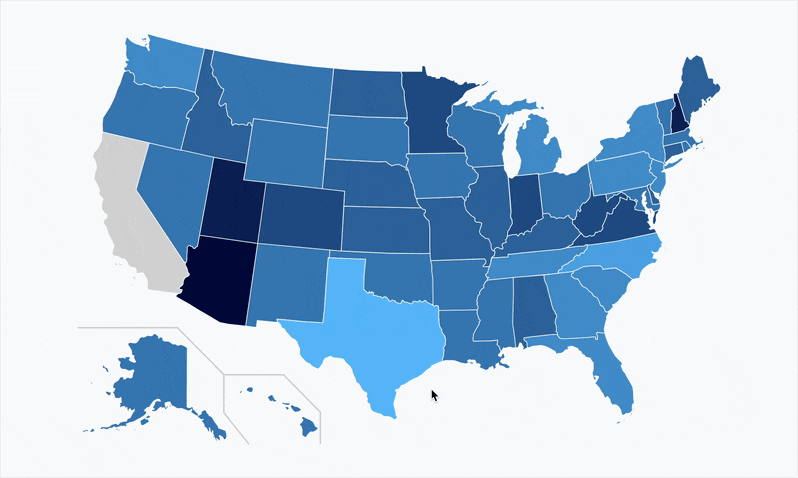International students are returning to the US, and geographic market trends are evolving. No doubt, this is welcome news for colleges and universities that hope foreign students will diversify their campuses and grow enrollment. But competition for these students can be fierce. How do academic program choices factor into international students’ enrollment decisions? And how can institutions use this data to improve their own recruiting efforts? Let’s take a look.
STEM Designation Matters to International Students
Not all programs are created equal when it comes to international students. Using Gray DI data, we analyzed program completions at the bachelor’s and master’s levels to see which programs graduated the most international students. The results, though perhaps not surprising, highlight the popularity of STEM-designated programs among foreign students. STEM designation is attractive because it allows these students to extend their stay in the US for Optional Practical Training (OPT) for an additional 24 months compared to non-STEM programs.
Nine out of the top 10 master’s programs completed by international students in 2022 were STEM-designated programs.

Source: Gray DI’s Program Evaluation System: Markets module
Half of the top 10 bachelor’s programs were STEM-designated.

Source: Gray DI’s Program Evaluation System: Markets module
In fact, our analysis found that 66 percent of all 2022 master’s completions by international students were in STEM programs and 46 percent of bachelor’s completions.
The Rise of STEM-Infused Programs
Schools are taking notice of the demand for STEM programs. For example, Stanford University changed the reporting CIP code for its BA in Economics to gain STEM designation for the program.
Our Gray DI data corroborates the idea that CIP code reporting changes between non-STEM and STEM programs may be happening more broadly. Analyzing completions over the past five years, we found some interesting trends in closely related program pairs showing significant growth in STEM-qualified versions and steep declines in the non-STEM versions. Here are two examples:
Architecture versus Architectural & Building Sciences
At first glance, student interest in Architecture programs (CIP code 04.0201) appears to be waning, with completions dropping 45 percent over the past five years. But upon closer inspection, we found that completions of a similar, STEM-designated program—Architectural & Building Sciences—grew an astonishing 216%.

Source: Gray DI’s Program Evaluation System: Markets module
In aggregate, the total number of completions of both programs grew by six percent. This suggests that interest in Architecture-related programs may not necessarily be waning. Rather, demand appears to be shifting to the STEM-qualified program version, especially among international students. In 2022, five times as many international students completed Architectural & Building Sciences programs compared to traditional Architecture programs.
Economics versus Econometrics and Quantitative Economics
We found a similar story with Economics programs versus STEM-qualified Econometrics and Quantitative Economics programs. Completions of Econometrics and Quantitative Economics programs grew by a staggering 466 percent from 2017 to 2022, while Economics program completions declined by 37 percent. In aggregate, the total number of completions of both programs grew by seven percent.
Nearly double the number of international students completed Econometrics and Qualitative Economics programs compared to Economics programs in 2022.

Source: Gray DI’s Program Evaluation System: Markets module
For international students, a program’s STEM designation can be a major deciding factor. By offering STEM-designated programs or developing STEM-infused versions of existing popular programs, institutions can position themselves as attractive options for international students.





